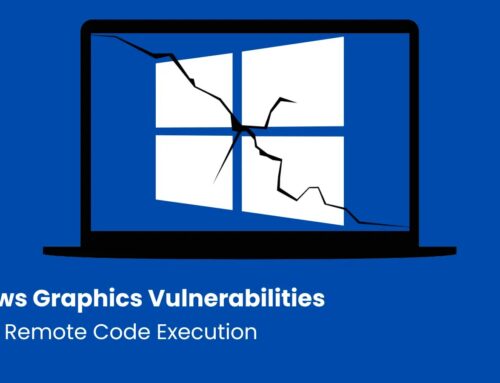
Chinese Hacker Jailed for Deploying Kill Switch on Ohio-based Key Company’s Global Network
A recent federal court sentencing has sent a clear message: insider threats and destructive cyberattacks carry severe consequences. In a case highlighting the critical vulnerabilities within even large-scale global networks, a Chinese national was sentenced to four years in prison for orchestrating a sophisticated cyberattack against his former employer. This incident serves as a stark reminder of the devastating impact a malicious insider can inflict, underscoring the urgent need for robust cybersecurity measures and vigilant monitoring.
The Malicious Insider: Davis Lu and the Kill Switch Deployment
The individual at the center of this case, Davis Lu, aged 55, leveraged his privileged access as a software developer to execute a crippling cyberattack. His actions were not a random act of vandalism but a calculated deployment of destructive malware designed to incapacitate his former company’s global network. This “kill switch” effectively disrupted operations for thousands of users across the globe, illustrating the catastrophic potential of insider threats.
The nature of the attack underscores a significant risk: individuals with deep system knowledge and elevated permissions pose a unique and potent threat. Unlike external attackers who must first breach defenses, insiders like Lu already possess the keys to critical infrastructure, making their attacks often more swift, devastating, and difficult to detect in their initial stages.
Anatomy of a Catastrophic Cyberattack
While specific technical details of the malware and its deployment methods are not publicly detailed, the outcome leaves no doubt about its destructive capabilities. The attack crippled operations, suggesting a wide array of potential impacts:
- Data Corruption/Deletion: Malware designed to destroy or render data unusable.
- System Downtime: Rendering critical services and applications inoperable.
- Operational Disruption: Halting business processes and supply chains.
- Reputational Damage: Significant loss of trust and credibility for the affected organization.
The fact that this was an “insider cyberattack against his former employer’s global network infrastructure” implies a deep understanding of the network topology, critical systems, and the ability to bypass or manipulate internal security controls that might have been in place for typical external threats.
The Wider Implications: Insider Threat Landscape
This case is not isolated. Insider threats remain a pervasive and challenging cybersecurity concern. They can originate from various motivations:
- Disgruntled Employees: As seen with Davis Lu, former employees harboring grievances can seek retribution.
- Financial Gain: Insiders may steal data for sale on dark web markets.
- Espionage: State-sponsored or corporate espionage can leverage insiders to exfiltrate sensitive information or disrupt operations.
- Negligence: Unintentional errors, poor security practices, or falling victim to phishing can inadvertently create vulnerabilities.
The challenge lies in detecting these threats when activity often appears legitimate due to the insider’s authorized access. This necessitates a shift from purely perimeter-focused security to robust internal monitoring and access control strategies.
Remediation Actions and Mitigating Insider Threats
Protecting against sophisticated insider threats like the one perpetrated by Davis Lu requires a multi-layered and proactive approach. Organizations must assume that insiders, both current and former, possess the potential to cause harm and build defenses accordingly.
- Robust Access Control and Least Privilege: Implement strict Least Privilege principles (CVE-2021-3448), granting users only the minimum necessary permissions to perform their job functions. Regularly review and revoke access upon employee termination or role changes.
- User Behavior Analytics (UBA): Deploy UBA solutions to monitor and detect anomalous behavior. Unusual login times, data access patterns, or attempts to access unauthorized systems can signal a potential insider threat.
- Network Segmentation: Isolate critical systems and sensitive data within segmented network zones. This limits the lateral movement of an attacker, even an insider, and reduces the blast radius of a breach.
- Endpoint Detection and Response (EDR): Utilize EDR solutions to monitor endpoint activity for suspicious processes, file modifications, and network connections that might indicate malicious software deployment.
- Regular Auditing and Logging: Implement comprehensive logging across all critical systems and applications. Regularly review logs for unusual activity and retain them for forensic analysis.
- Security Awareness Training: Educate employees about insider threat indicators, reporting mechanisms, and the importance of secure practices.
- Offboarding Procedures: Establish and strictly adhere to thorough offboarding procedures for departing employees, including immediate revocation of all system access, retrieval of company assets, and disabling of credentials.
- Data Loss Prevention (DLP): Implement DLP solutions to prevent sensitive data from leaving the organization’s network through unauthorized channels.
Tools for Insider Threat Detection and Prevention
| Tool Name | Purpose | Link |
|---|---|---|
| Exabeam | User and Entity Behavior Analytics (UEBA) | https://www.exabeam.com/ |
| SecurID (RSA) | Identity and Access Management (IAM), Multi-Factor Authentication (MFA) | https://www.rsa.com/products/securid/ |
| Proofpoint | Data Loss Prevention (DLP), Email Security | https://www.proofpoint.com/ |
| CrowdStrike Falcon Insight | Endpoint Detection and Response (EDR), Threat Hunting | https://www.crowdstrike.com/products/endpoint-security/falcon-insight-edr/ |
| Varonis | Data Security Platform, User Behavior Monitoring | https://www.varonis.com/ |
Conclusion: Strengthening Defenses Against the Internal Threat
The sentencing of Davis Lu serves as a critical case study in the ongoing battle against sophisticated cyber threats. It powerfully illustrates that even organizations with robust external defenses can be profoundly vulnerable to malicious insiders who leverage their privileged access. For cybersecurity professionals, this incident reinforces the imperative to shift focus beyond perimeter security to comprehensive internal monitoring, stringent access controls, and rapid incident response capabilities. Proactive measures, continuous vigilance, and an understanding of human factors are paramount in safeguarding global networks from those who seek to exploit their deep-seated knowledge for destructive purposes.





